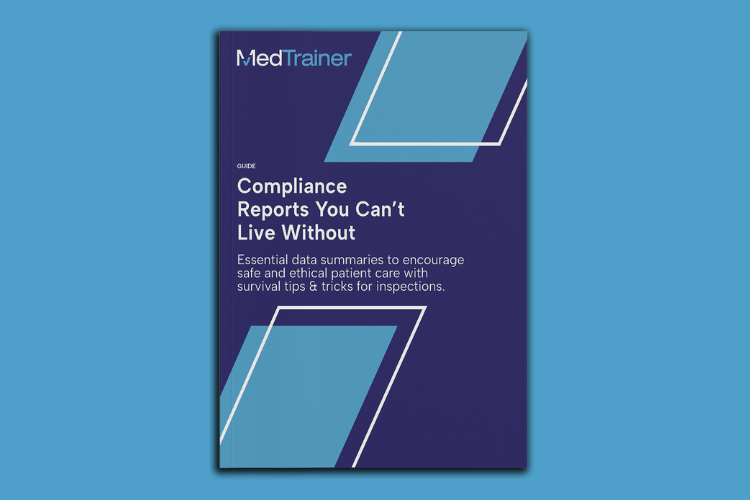In the United States, there are several compliance frameworks and entities that govern requirements for the healthcare industry. Each governing body oversees a different aspect of regulatory compliance. To understand which compliance frameworks govern which requirements, we need to break it down entity by entity. Let’s start by defining what a compliance framework is all about.
What Is a Compliance Framework in Healthcare? An Analogy
As an analogy, think of how college programs are set up. You start with a list of courses you need to complete to earn a certain degree. Within each course is a syllabus full of projects you need to complete to pass the course and obtain your degree. Healthcare compliance frameworks are similar. There are a group of governing bodies (classes) that regulate healthcare compliance (the degree), and within each body are a set of requirements (projects) you need to complete. A compliance program, or framework (syllabus) is what you need to follow in order to achieve regulatory compliance for each governing body (class).
So, the syllabus you need to create, aka compliance framework, is a comprehensive program that organizations develop in order to maintain compliance. It involves efficient processes, policies, and procedures that meet the compliance requirements of governing bodies. Compliance frameworks establish appropriate behavior, educate the organization’s employees on these standards, and oversee adherence to the established processes, policies, and procedures.
Get everything you need to know about the 9 compliance reports you can't live without.
Governing Bodies That Require Healthcare Compliance Frameworks
Sticking with the college program analogy, let’s lay out some of the “classes,” or governing bodies, required to earn your “degree” in compliance. The purpose of healthcare compliance frameworks — the “syllabus” explained later — is to ensure that organizations and professionals adhere to a set of laws, regulations, and ethical standards set by various governing bodies.
Department of Health and Human Services
The United States Department of Health and Human Services (HHS) is the primary federal agency responsible for protecting the health of all Americans and providing essential human services. HHS oversees a wide range of health-related issues, including:
- Administration of healthcare programs like Medicare and Medicaid
- Public health
- Medical and social science research
- Food and drug safety
- Disease prevention and control
- Health information technology
- Financial assistance and services for low-income families
- Child and maternal health
- Mental health services
- Substance abuse treatment and prevention
- Services for older Americans, including those for income support and food and nutrition
Office of Inspector General
The Office of Inspector General (OIG) for the Department of Health and Human Services (HHS) oversees various aspects of healthcare with a focus on combating fraud, waste, and abuse. It conducts audits, investigations, and evaluations to ensure efficiency and integrity in HHS programs, including Medicare and Medicaid.
The OIG also enforces standards for healthcare providers and suppliers to prevent fraud and imposes penalties for non-compliance. Additionally, it oversees the compliance of healthcare entities with federal laws and regulations and is responsible for maintaining the List of Excluded Individuals/Entities (OIG-LEIE).
Centers for Medicare & Medicaid Services
The Centers for Medicare & Medicaid Services (CMS), a federal agency within the Department of Health and Human Services (HHS), administers the major healthcare programs including:
- Medicare: a federal program providing healthcare coverage to people who are 65 or older, certain younger people with disabilities, and people with End-Stage Renal Disease (ESRD).
- Medicaid: a joint state and federal program that provides health coverage to some people with limited income, including families and children, pregnant women, the elderly, and people with disabilities.
- The Children’s Health Insurance Program (CHIP): provides coverage to children in families with incomes too high to qualify for Medicaid, but can’t afford private coverage.
- The Health Insurance Marketplaces: created under the Affordable Care Act (ACA) to enable individuals to find health coverage.
CMS also works to improve healthcare quality, ensure healthcare coverage availability, reduce healthcare costs, and enforce regulatory provisions related to healthcare.
Office for Civil Rights
The Office for Civil Rights (OCR) is another branch of HHS. It is responsible for enforcing several key federal civil rights laws that prohibit discrimination in health care and social service programs. OCR’s oversight includes:
- Enforcing the Health Insurance Portability and Accountability Act (HIPAA) Privacy and Security Rules, which protect individuals’ health information.
- Ensuring compliance with the civil rights laws that prohibit discrimination on the basis of race, color, national origin, disability, age, sex, and religion by health care and human services entities.
- Implementing the Patient Safety Act and Rule, which protect identifiable information being used to analyze patient safety events and improve patient safety.
Occupational Safety and Health Administration
The Occupational Safety and Health Administration (OSHA) oversees a wide range of safety and health issues in the healthcare sector, including:
- Setting and enforcing standards to ensure a safe and healthful working environment for healthcare workers.
- Providing training, outreach, education, and assistance to healthcare employers and employees.
- Requiring the use of personal protective equipment (PPE) and other safety measures to protect workers from bloodborne pathogens and other infectious diseases.
- Regulating workplace ergonomics to prevent injuries from repetitive tasks or overexertion.
- Overseeing the handling and disposal of hazardous materials and waste.
- Enforcing regulations related to workplace violence prevention in healthcare settings.
How To Develop a Compliance Framework
After researching the requirements for each governing body, it’s time to create your “syllabus,” or compliance framework. A comprehensive compliance plan is your framework. While each governing body may have different requirements that require research, some aspects are universal. The OIG sets forth seven elements for developing an effective compliance program that apply to most governing body requirements:
- Implement written policies, procedures and standards of conduct. Make sure your policies and standards of conduct cover OSHA, HIPAA, OIG, CMS, and OCR requirements, along with any state-specific or accreditation guidelines your organization needs to adhere to. Set up a system for staff acknowledgements to prove that everyone at your organization has reviewed requirements.
- Designate a compliance officer and/or compliance committee. Whether it’s a compliance department, officer, or committee, having a point of contact for compliance leadership is essential to a compliance framework. They will be able to research, update, manage, and lead an organization through healthcare inspections with confidence.
- Conduct effective training and education. Continuous education in healthcare compliance is crucial, ensuring that staff members are well-informed and engaged. Effective training emphasizes the significance of compliance and reinforces its fundamental principles.
- Develop effective lines of communication. It’s essential to have clear and confidential channels for expressing concerns and reporting issues. Openness enables the early detection of issues and promotes prompt resolutions.
- Conduct internal monitoring and auditing. Regular assessments of the compliance program help identify areas for improvement. Conducting internal reviews is crucial to maintain its effectiveness and reliability. By proactively improving the program, your institution is better prepared for any external regulatory examinations.
- Enforce standards through well-publicized disciplinary guidelines. Make sure employees know the compliance expectations and consequences for non-compliance. Write expectations into policies and send periodic reminders of what the expectations are.
- Respond promptly to compliance violations with corrective action. A system that openly rewards compliance and disciplines violations promotes consistency. This approach underscores the significance of the program, ensuring it is taken seriously by all involved.
Achieve Compliance With a Solid Framework
To meet U.S. healthcare regulatory requirements, you need to build a solid compliance framework. Having a comprehensive compliance program will set you up for success to pass inspections, develop a positive reputation, avoid non-compliance, obtain or maintain accreditation, and most importantly, establish a safe and ethical environment for both patients and staff.
MedTrainer’s all-in-one compliance software can help you to achieve all this, and more. Automated reminders keep you on track with deadlines, elearning makes it easy to train staff, digital documents and policies promote transparency, and user-friendly credentialing tools save you substantial time. Ready to bring the compliance framework you’ve always dreamed of to life? Schedule a demo today.

